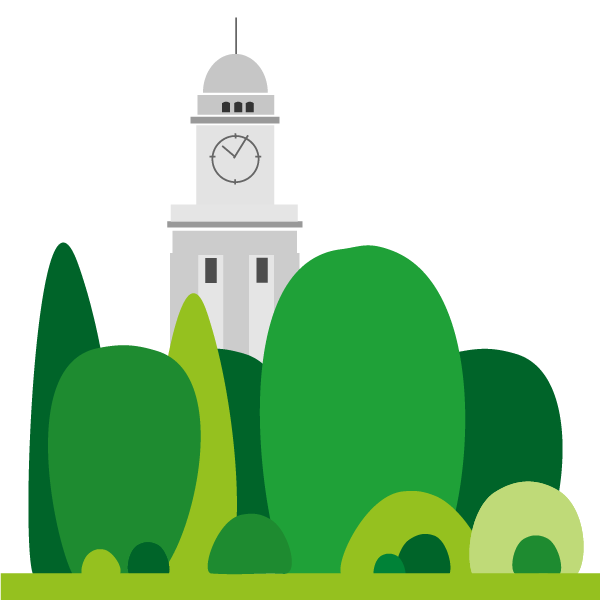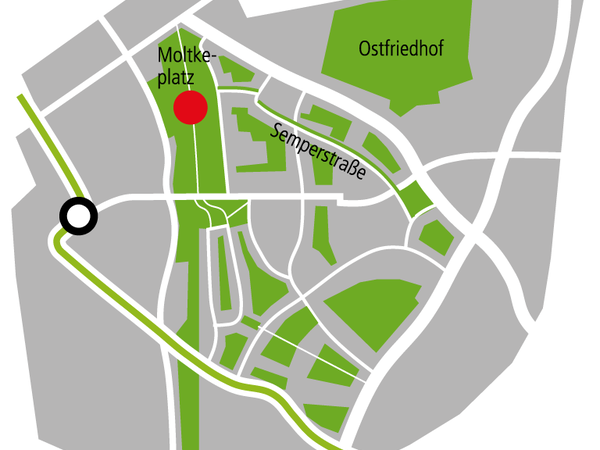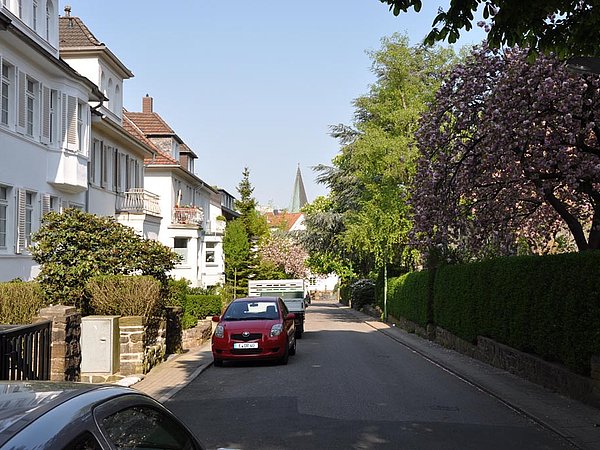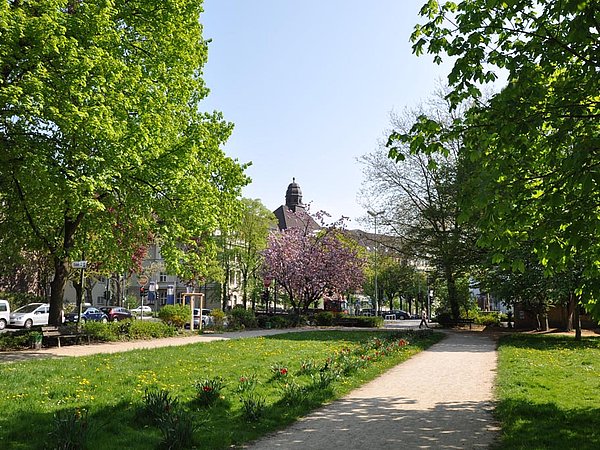Moltke Quarter
Outstanding example of early reform architecture in Germany from 1905, with lots of urban greenery, Gartenstraße (Semperstraße), numerous listed buildings and works of art worth seeing
From the Moltkestraße stop, you go down the tree-lined Moltkestraße, in some parts with front gardens, over an interesting bridge to the up-market residential district. The Moltke Quarter is an outstanding example of early reform architecture in Germany from 1905. It is extremely worthwhile walking through the streets looking at the magnificent villas and rows of houses with front gardens.
The Moltke Quarter was created by the Essen city planner, Robert Schmidt, at the start of the 20th century as an answer to the shortage of up-market housing for the middle classes of the up-and-coming and prosperous city of Essen. All the green zones were planned in detail when the urban development was conceived. The cityscape is dominated by main roads designed as avenues and smaller, sweeping residential streets with large front gardens. Worth mentioning in particular is Semperstraße with the nickname "Gartenstraße" ('Garden Street'). Robert Schmidt's idea was to continue the green of the Ruhr Valley through the Siepen Valley, Camillo-Sitte-Platz and the front gardens in Semperstraße right down to Moltkeplatz.
This is a situation typical of Essen right up to the present day: green areas connect the densely populated city centre with the city's suburbs, thus creating numerous entrances to the Essen greenery. Then as now, the city planners were and are aware that green spaces, playgrounds and wooded areas are a major contribution towards improving the living conditions of residents.
Even today, the Moltke Quarter still forms a wonderful urban development unit with regard to town planning, architecture, green spaces (refer also to Wiebe Park) and art. The quarter's landmark is a large clock tower of the Robert-Schmidt-Berufskolleg (Vocational College), formerly the Königliche Baugewerkschule (Royal Building College). The former residence of the former German President, Gustav Heinemann, is located at Schinkelstraße 34. The largest green space in the quarter is Moltkeplatz with its variety of uses: its division into tennis courts, other sports, play and recreation areas was already planned during its creation in the early 20th century.
An ensemble of high-quality sculptures in the north of Moltkeplatz, for which an association founded by local residents took over the patronage in 2007, is a distinctive attraction and a worthwhile destination for everyone.
Additional tip:
If you follow Moltkestraße from the Moltke Quarter over Ruhrallee towards the east, you come to the Parkfriedhof cemetery on the other side of Steeler Straße where you will find Robert Schmidt's grave (block 8, No. 91). Moltkestraße, designed as a green avenue, natural V-shaped valleys which, coming from the Ruhr Valley, merge in green strips into the developed city, large buildings such as the Ruhr College (formerly a teachers' seminary, built by Edmund Körner) which are integrated into the landscape and the beautiful finale with the "Camposanto-like" Parkfriedhof cemetery situated on a hilltop surrounded by woods, create a wonderful walk which is roughly 1.5 km long.

Contact
EssenFurther Information
Description of route
From the Moltkestraße stop
250 m to the Moltke Quarter
Follow Moltkestraße towards the east, turn left into Moltkeplatz, below sculpture meadow, then turn right into Semperstraße
Share this page



